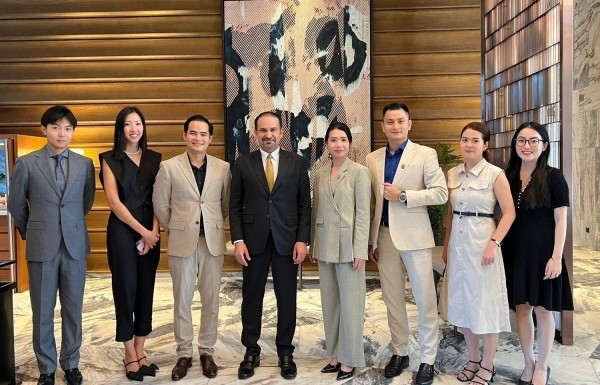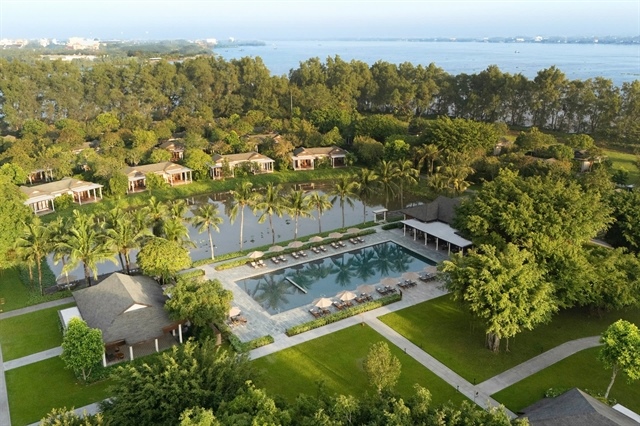Property market to maintain recovery this year: CBRE
Property market to maintain recovery this year: CBRE
Viet Nam's real estate market will continue its recovery this year with support from the improving macroeconomic environment, CBRE Viet Nam Market Outlook said.

This year, the macroeconomic environment is expected to keep improving, CBRE Viet Nam Co. Ltd, a foreign property service provider in Viet Nam, said in its first market outlook about Viet Nam's property sector, released this month.
The country's GDP structure is gradually shifting from agriculture, forestry and fisheries to manufacturing, construction and services. Thanks to its positive fundamentals, recently signed trade agreements and affordable work force, Viet Nam will continue to attract more foreign investment. However, competition will intensify and force the government to make proper changes in policies, especially in taxes, to stay competitive in the regional market.
In terms of real estate, leasing activities continue to gain momentum. Rent growth and occupancy levels witnessed sustained improvements across all property types. In many ways, the commercial and residential real estate market of Viet Nam is becoming more solid since the world financial crisis in 2008. Nevertheless, the industry still needs more transparent approvals and a regulatory body in the interest of investors. Developers should understand the objectives and investment pattern of these investors in order to spur more foreign capital investment.
New retail trends
During 2015, the retail markets in HCM City and Ha Noi each recorded 150,000 additional square metre net leasable areas. The vacancy rates of shopping centres in the central business district (CBD) of HCM City were able to stay at about 10 per cent, thanks to their anchor tenants. Ha Noi achieved the same performance with stable market vacancy at eight to nine per cent. Despite increasing new supplies, these current trends are expected to continue in 2016.
The discrepancy between rental levels in CBD and non-CBD areas of HCM City and Ha Noi are significantly high. Most projects in the CBD performed better than the average market, thanks to their target high-end consumers. Thus, a rise in future average rents is expected, but at a conservative pace as more shopping centres in the non-CBD areas diluted the average market rental price by 10 per cent in 2015.
In addition, Viet Nam's retail market also adjusted to the changing consumer demand with new market trends following an influx of new tenants such as ‘retail-tainment', ‘affordability' or ‘online retail'.
Demand for office space to grow
Viet Nam's office market stay subdued in 2015, with only one new Grade A building in HCM City (Vietcombank Tower) and none in Ha Noi.
The opening of the new Vietcombank Tower helped expand Grade A's net absorption in HCM City significantly year-on-year. However, HCM City's office net absorption will decline in 2016, since there is no new completed project and vacant space very limited, and will thrive from 2017 as the demand from foreign companies will spur, given the current momentum of economic recovery and increasing FDI in the city. With a positive economy outlook, companies in HCM City will likely consider relocations and expansions, with the ideal office space being around 1,000sq.m to 2,000sq.m, located in the city centre.
The surge in office space supply in Ha Noi over the past four years was the main cause for its rental price reduction. With the current net absorption lagging behind future pace of supply, the vacancy for Grade A buildings is forecast to be up seven points, reaching 24.7 per cent in 2016. In addition, upcoming Grade A supply in West and Midtown clusters will have to offer much lower rental rates than CBD to compete with other upcoming Grade B supply nearby. Demand, on the other hand, is expected to grow in the next few years, coming from both multinational corporations and local enterprises' expansion.
Abundant supply of residential units
Market confidence improved through well-attended launches, increasing sales volume and price improvements throughout 2015. An estimated 41,787 units were launched in HCM City and 28,283 units in Ha Noi across all segments. A large portion of these focused on becoming "luxury" units, with quality varying greatly between developers. In addition, the affordable segment also accounted for a significant portion of the launched supply and proved to be a good choice for a majority of end-users.
The price growth rate is expected to peak in 2016. With more discerning buyers and abundant supply, developers are cautious in raising prices in order to ensure that the sales schedule proceeds as planned. Price growth will mostly come from new top-tier properties at very prime and expanding CBD locations, asking between US$7,500-$10,000 per sq.m for HCM City, and in the range of $1,600-$3,500 per sq.m for Ha Noi.
In terms of demand, absorption in 2016 is expected to slightly fall compared with 2015 and then decline in 2017 and 2018 for both markets.
Foreigners are still examining the local real estate market before proceeding to the next stage. Nevertheless, professionalism, language proficiency and ease of payment are among key issues that need preparation for this next wave of customers.
Expanding capital markets
After a period of conservative lending as part of the efforts to restructure their portfolio and non-performing loans, banks restarted lending to new real estate developments in 2014.
In 2016, in terms of income-producing assets, office properties will continue to be the main focus of investors. Interest will remain high in HCM City and Ha Noi, following a new flow of foreign investment from the TPP.
Hospitality remains upbeat, as Viet Nam becomes a new holiday destination. Industrial properties can expect strong growth as more multinational corporations are opening and expanding manufacturing facilities in Viet Nam to take advantage of the TPP and other trade benefits. Retail's high entry barriers will force new players to acquire existing portfolios as part of their entrance and expansion plan.




















